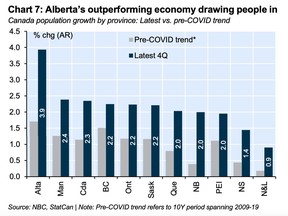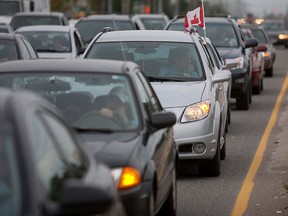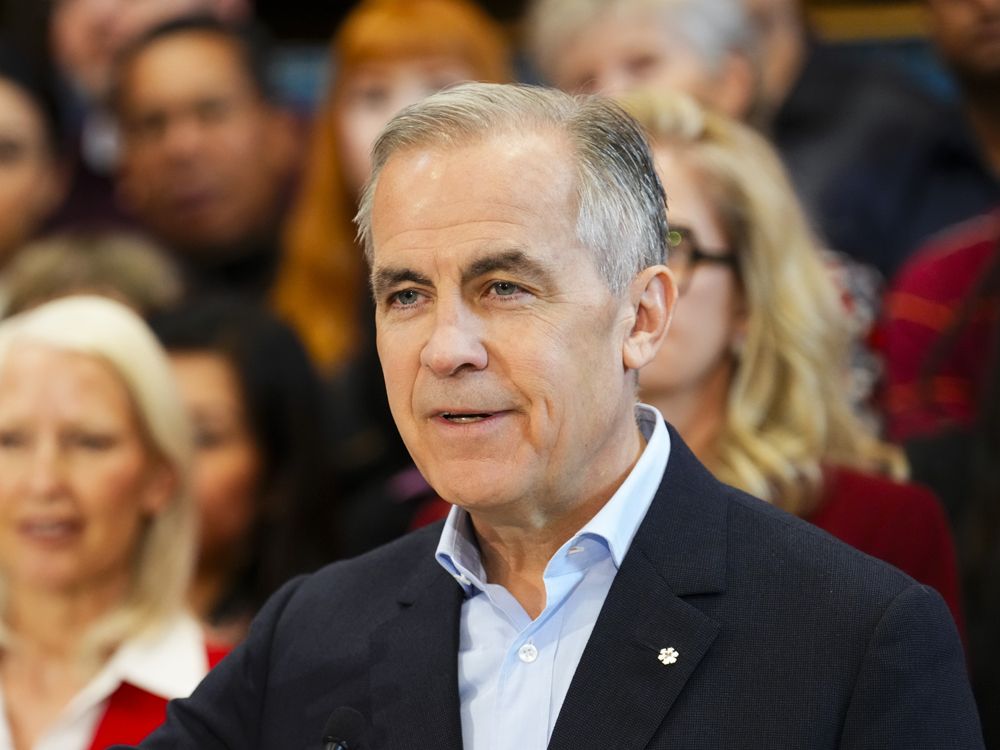Study estimates gridlocks cost Ontario’s economy almost $13 billion in 2024
Article content

Article content
Article content
New York City marked a milestone Sunday when it followed London, Stockholm and Singapore in charging a congestion fee, the first in North America.
Now drivers entering parts of Manhattan will be charged US$9 during peak hours, a controversial move that highlights the problem traffic has become in the world’s major cities.
A recent study suggests that traffic congestion in Ontario, Canada’s most populous province, has ballooned beyond just a transportation problem to a “crisis” that is hitting the economy and well-being of residents.
Advertisement 2
Article content
Since 2001, cars on the road in the Greater Toronto and Hamilton Area have increased by 37 per cent and by 17 per cent in the rest of province, says the study commissioned by the Residential and Civil Construction Alliance of Ontario (RCCAO) and the Ontario Road Builders’ Association. Truck traffic is up by 32 per cent throughout Ontario.
The study estimates that the impact of traffic congestion on Ontario’s economy at $12.8 billion in 2024, with the GTHA taking $10 billion of that hit.
Not only does the transport of goods and services cost more in heavy traffic, the delays also decrease business productivity and reduce the efficiency of workers, says the report.
There are also social costs. Transportation is now the second-largest household expense in Ontario, 23 per cent higher than food, says the study.
It estimates the impact of congestion on commuters’ quality of life due to stress, health and time lost at $43.6 billion in 2024.
“Traffic congestion is strangling our economy and making daily life harder for millions of Ontarians,” said Nadia Todorova, executive director of RCCAO.
Article content
Advertisement 3
Article content
So much so that many are considering moving. A survey last year by Toronto Region Board of Trade found that more than half of residents polled were considering relocating away from the GTHA to avoid congestion problems.
The sentiment was strongest among younger generations, with 64 per cent of residents aged 18-34 considering a move.
“The data highlights a troubling trend: traffic congestion is more than an inconvenience it stands as a driving factor behind the potential exodus of our future workforce,” the board of trade said in a press release.
According to RCCAO, it’s a problem that is only going to get worse, without governments increasing infrastructure investment and expediting projects.
The population of Ontario is expected to reach 20.4 million over the next 20 years, with half of that growth in and around Toronto. Congestion could surge by almost 60 per cent in that time, tripling the economic costs, said the study.
Sign up here to get Posthaste delivered straight to your inbox.


Canada’s population, now at 41.5 million, is still growing, the latest data show, but in some provinces more than others. Today’s chart by National Bank of Canada shows how Alberta’s outperforming economy is attracting double the numbers of most other regions and pulling in net interprovincial in-migration from other parts of the country.
Advertisement 4
Article content
Canada gained 950,000 residents over the past year, up to Oct. 1. The 2.3 per cent annual gain is down from recent years, but still hefty by international standards. Population growth in the United States, for example, is around 0.5 per cent, the economists said.

- Today’s Data: United States factory orders



Recommended from Editorial

A couple approaching retirement would rather spend their money on their kids and grandkids now than leave a big inheritance. They are aiming for an after-tax income of $80,000 to $90,000 a year, which will allow them to renovate their 50-year-old home, travel several times a year and make some cash gifts to their two children, who are both struggling financially as they build their families. FP Answers explains why it makes sense to set up a cash flow plan. Find out more
Advertisement 5
Article content
Calling Canadian families with younger kids or teens: Whether it’s budgeting, spending, investing, paying off debt, or just paying the bills, does your family have any financial resolutions for the coming year? Let us know at wealth@postmedia.com.
McLister on mortgages
Want to learn more about mortgages? Mortgage strategist Robert McLister’s Financial Post column can help navigate the complex sector, from the latest trends to financing opportunities you won’t want to miss. Plus check his mortgage rate page for Canada’s lowest national mortgage rates, updated daily.
Financial Post on YouTube
Visit the Financial Post’s YouTube channel for interviews with Canada’s leading experts in business, economics, housing, the energy sector and more.
Today’s Posthaste was written by Pamela Heaven, with additional reporting from Financial Post staff, The Canadian Press and Bloomberg.
Have a story idea, pitch, embargoed report, or a suggestion for this newsletter? Email us at posthaste@postmedia.com.
Bookmark our website and support our journalism: Don’t miss the business news you need to know — add financialpost.com to your bookmarks and sign up for our newsletters here
Article content
Canada’s congestion ‘crisis’ is costing billions
2025-01-06 13:03:57





